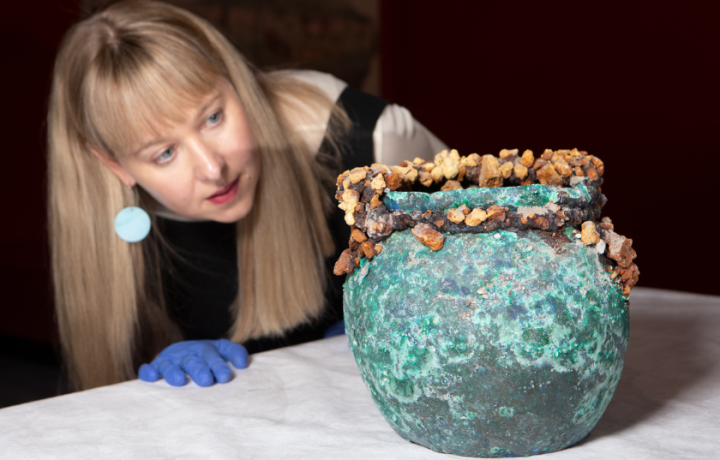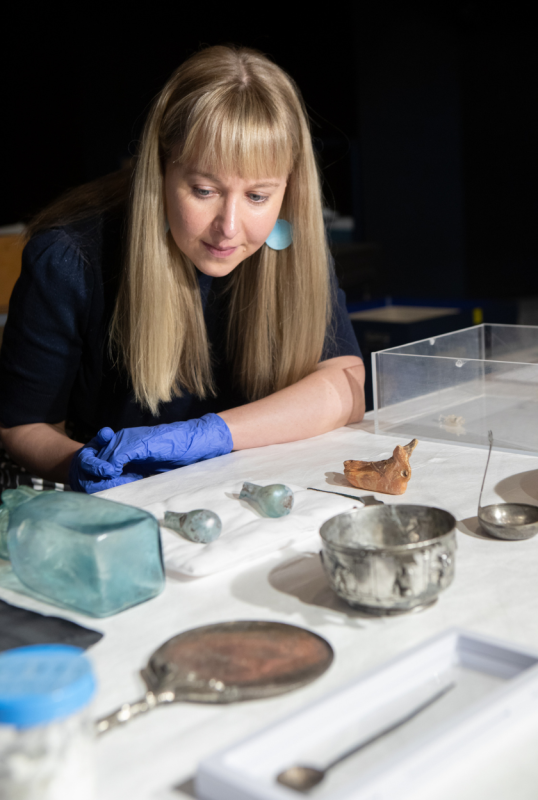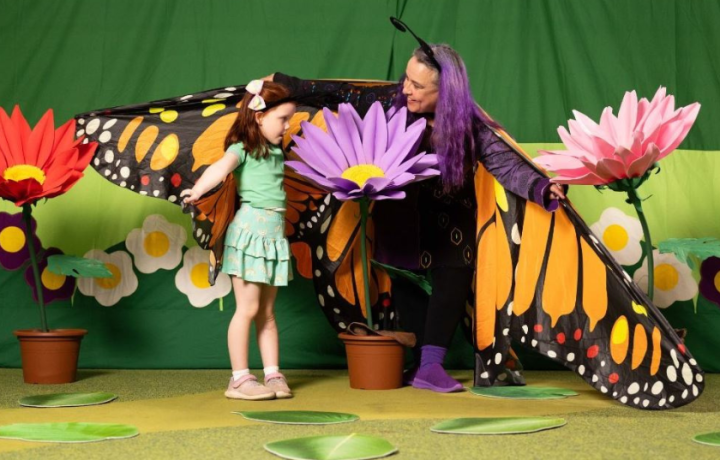More than ancient history – the rich afterlife of Pompeii at the National Museum of Australia

Posted on
The endurance of hope and humanity. Connection to past and present. A crossing of cultures to tell one of the most compelling stories in human history.
This is what the National Museum of Australia (NMA) lead coordinating curator Dr Lily Withycombe says the Pompeii exhibition is truly about.
Opening at the NMA in December 2024, Pompeii is a first-of-its-kind exhibition that allows visitors to experience the majesty, wonder and tragedy of the famous city in an entirely new way.
And while there’s no denying that the combination of moving soundscapes, large-scale digital projections and fascinating objects makes it a not-to-be-missed blockbuster in the nation’s capital, there’s so much more to this exhibition than meets the eye.
For Lily, curating Pompeii has been a particularly special experience, one marking a full-circle moment in her career. Always drawn to the magic and wonder of museums and galleries while growing up, she says that attending an exhibition on Pompeii in 1995 at the Australian Museum set her on a path to study archaeology.
Years later she would get the chance to visit the ancient city herself, working as an archaeologist on the Pompeii Archaeological Research Project: Porta Stabia. It partly was this work and its focus on everyday lives under Professor Steven Ellis that inspired the 90 objects chosen for the Pompeii exhibition.
Presenting the people of Pompeii as they were just before the eruption of Mount Vesuvius in 79 CE, she says that she wanted to select objects that could tell multi-layered stories.
“It has profoundly influenced everything I’ve done subsequently, but especially for this exhibition,” Lily explains.
“We knew that we had this really strong multimedia element and what we wanted to make sure was that we had a selection of objects that weren’t going to be dwarfed by the multimedia. But equally, the objects weren’t going to dwarf the multimedia either. We wanted to make sure that they could work in harmony.”
Along with the spectacular 360-degree recreation of Mount Vesuvius’ eruption that allows visitors to be immersed in the volcano’s devastating explosion and aftermath, Lily carefully chose stunning frescoes spanning more than three metres, magnificent mosaics, jewellery, sculptures, and replicas of casts of people who died in the disaster.

Fresco of a garden scene, painted plaster, 1st century CE, House of the Golden Bracelet. Parco Archeologico di Pompei.
But her philosophical approach was to ensure she was bringing objects from Pompeii that could also speak to everyday lived experience.
“With Pompeii, one of the reasons it’s so extraordinary is because of the survival of so many incredible objects. And so, we had to make sure that we included high impact, high-value pieces as well,” she explains.
“On the one hand, it was thinking about what people might want to see – like the frescoes and gold jewellery – but also choosing objects that could tell these really multi-layered stories about everyday life and lived experiences, that speak directly to people today.”
However, Lily says the exhibition isn’t just about Pompeii itself.
There’s a strong Australian story in the history of the city, with a selection of objects on display coming from some of the most significant archaeological digs at Pompeii in the last 100 years, some of which were excavated by Australian archaeologists.
“Often overlooked is the fact that there’s this Australian contribution in history and story…but then it’s also about thinking more laterally about the fact that there are more than 1.6 million people in Australia who identify as having Italian ancestry and heritage,” she says.
Speaking to more than the moment of death for thousands of people, Lily hopes that the exhibition shows visitors that the compelling story of Pompeii and its tragic destruction is more than ancient history.

She says that the series of objects she chose also speaks to the endurance of hope, and humanity following the catastrophic volcanic eruption that destroyed the city of Pompeii.
“The story of what happened in Pompeii in 79 CE is confronting. It’s compelling, it’s enthralling and speaks to the heart of human existence, life and death, and what do you do in that moment of complete chaos and fear,” she says.
“And then there’s also this extraordinary story of what happens afterward in Pompeii. For a site that we often think about in terms of destruction and death, it also has this incredible afterlife and eternal life through archaeology.
“I want visitors to leave thinking about this afterlife, the ongoing, extraordinary experience of Pompeii and that quite uplifting sense of international collaboration, research and possibility. I want them to leave feeling a bit differently about Pompeii.”
THE ESSENTIALS
What: Pompeii
When: Until Sunday 4 May 2025
Where: National Museum of Australia, Lawson Crescent, Acton
Tickets + more information: nma.gov.au/pompeii
Photography: George Serras/National Museum of Australia.

